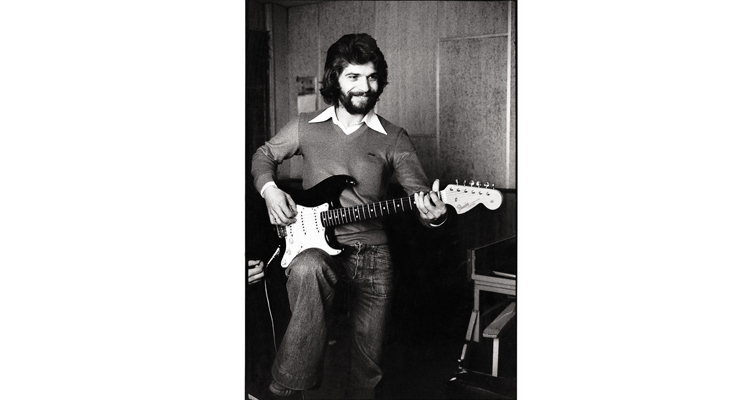

Camarón de la Isla
Mario Pacheco
Archivo Mario Pacheco

Camarón protagonizó en 1979 un hito relevante en la historia del flamenco: la publicación de La leyenda del tiempo, una obra inicialmente incomprendida que el tiempo ha convertido en histórica. El disco, producido por Ricardo Pachón, incorporaba a la jondura de Camarón los sonidos de guitarras eléctricas, teclados y baterías. Se iniciaba así un “nuevo flamenco” que generaría numerosas fusiones con músicas tan dispares como el rock, la salsa, el blues o el jazz.
En esa década Lole y Manuel con sus poéticas letras y su estética hippy encandilaron a un público joven que, a través de ellos y superando prejuicios, se acercó por primera vez al flamenco.
En torno a la discográfica Nuevos Medios, dirigida por Mario Pacheco, se nuclearon los llamados “Jóvenes Flamencos” y trajeron modernidad y frescura a la música española. Ketama y Pata Negra destacan en este “nuevo flamenco” mestizo y abierto a tantas influencias, pero impregnado de esencia y herencia gitanas.
Camarón laid down a milestone in the history of Flamenco in 1979 with the release of La leyenda del tiempo, a work which was initially not understood but which has over the years achieved historic status. The record, produced by Ricardo Pachón, blended Camarón's Flamenco singing with the sounds of electric guitars, keyboards and drums. This marked the start of a “new Flamenco” which would lead to numerous fusions with such wide-ranging musical styles as rock, salsa, blues and jazz.
During the same decade Lole and Manuel, with their poetic lyrics and hippy styling, captivated a young audience who overcame through them their prejudices to came into contact with Flamenco for the first time.
The Nuevos Medios label headed by Mario Pacheco provided the nucleus for the so-called “Young Flamencos”, bringing modernity and freshness to Spanish music. Ketama and Pata Negra are the outstanding names in this hybrid “new Flamenco”, open to all influences, but imbued with a Romani essence and heritage.
Camarón protagonizó en 1979 un hito relevante en la historia del flamenco: la publicación de La leyenda del tiempo, una obra inicialmente incomprendida que el tiempo ha convertido en histórica. El disco, producido por Ricardo Pachón, incorporaba a la jondura de Camarón los sonidos de guitarras eléctricas, teclados y baterías. Se iniciaba así un “nuevo flamenco” que generaría numerosas fusiones con músicas tan dispares como el rock, la salsa, el blues o el jazz.
En esa década Lole y Manuel con sus poéticas letras y su estética hippy encandilaron a un público joven que, a través de ellos y superando prejuicios, se acercó por primera vez al flamenco.
En torno a la discográfica Nuevos Medios, dirigida por Mario Pacheco, se nuclearon los llamados “Jóvenes Flamencos” y trajeron modernidad y frescura a la música española. Ketama y Pata Negra destacan en este “nuevo flamenco” mestizo y abierto a tantas influencias, pero impregnado de esencia y herencia gitanas.
Camarón laid down a milestone in the history of Flamenco in 1979 with the release of La leyenda del tiempo, a work which was initially not understood but which has over the years achieved historic status. The record, produced by Ricardo Pachón, blended Camarón's Flamenco singing with the sounds of electric guitars, keyboards and drums. This marked the start of a “new Flamenco” which would lead to numerous fusions with such wide-ranging musical styles as rock, salsa, blues and jazz.
During the same decade Lole and Manuel, with their poetic lyrics and hippy styling, captivated a young audience who overcame through them their prejudices to came into contact with Flamenco for the first time.
The Nuevos Medios label headed by Mario Pacheco provided the nucleus for the so-called “Young Flamencos”, bringing modernity and freshness to Spanish music. Ketama and Pata Negra are the outstanding names in this hybrid “new Flamenco”, open to all influences, but imbued with a Romani essence and heritage.